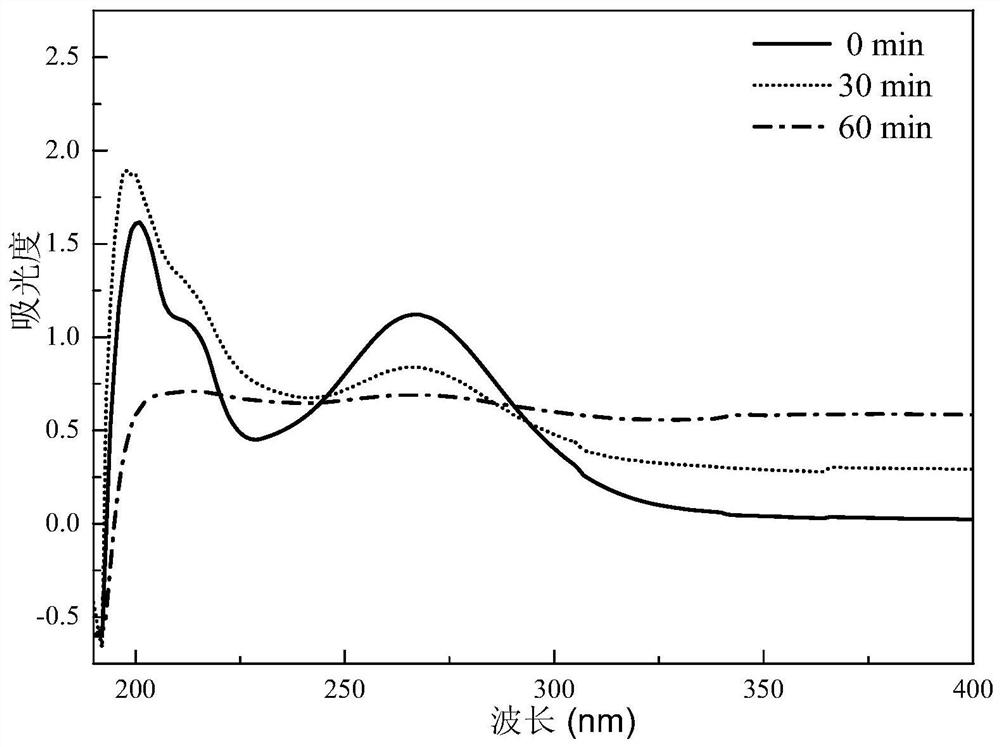A method for degrading organic wastewater by using solar energy through photo-electric-thermal three-field coupling
An organic wastewater and solar cell technology, applied in general water supply conservation, chemical instruments and methods, special compound water treatment, etc., can solve problems such as energy loss, inability to fundamentally improve solar energy utilization, etc. Conducive to the effect of reaction kinetics and reduction of redox potential
- Summary
- Abstract
- Description
- Claims
- Application Information
AI Technical Summary
Problems solved by technology
Method used
Image
Examples
Embodiment 1
[0042] The method provided by the invention is used to degrade the wastewater containing nitrobenzene.
[0043] Preparation of photocatalyst material: The titanium sheet was ultrasonically cleaned in acetone, absolute ethanol and distilled water for 15 min in sequence, and dried in nitrogen. Two-electrode system is adopted: the power supply adopts a DC stabilized power supply, and the titanium sheet is used as the anode to connect to the positive electrode of the DC power supply, and the platinum sheet (2cm×2cm) is connected to the negative electrode of the power supply as the counter electrode. 4 F+(CH 2 Oh) 2 +2vol%H 2 In the electrolyte solution composed of a mixed solution of O, the electrolysis was carried out at a constant voltage of 50V at room temperature, and the electrolysis time was 30min. After the reaction, the titanium sheet was rinsed with distilled water, placed in a muffle furnace in an air atmosphere, and the temperature was raised from room temperature to...
PUM
 Login to View More
Login to View More Abstract
Description
Claims
Application Information
 Login to View More
Login to View More - R&D
- Intellectual Property
- Life Sciences
- Materials
- Tech Scout
- Unparalleled Data Quality
- Higher Quality Content
- 60% Fewer Hallucinations
Browse by: Latest US Patents, China's latest patents, Technical Efficacy Thesaurus, Application Domain, Technology Topic, Popular Technical Reports.
© 2025 PatSnap. All rights reserved.Legal|Privacy policy|Modern Slavery Act Transparency Statement|Sitemap|About US| Contact US: help@patsnap.com



